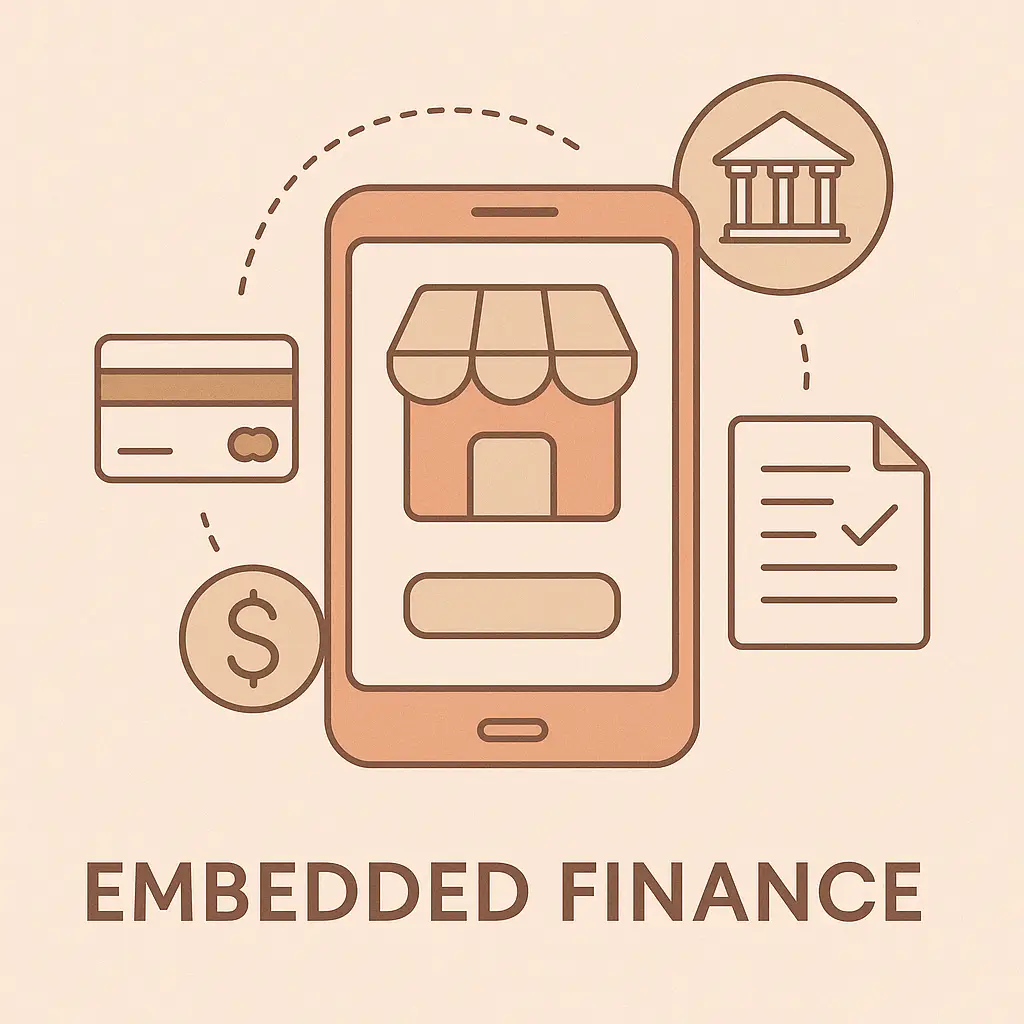The Embedded Finance Revolution: How Financial Services Are Becoming Invisible Yet Ubiquitous
Abstract
Embedded finance is rapidly redefining how consumers access and interact with financial services. By integrating capabilities such as payments, lending, insurance, and even investments directly into non-financial platforms, embedded finance eliminates the friction traditionally associated with banking. From e-commerce sites offering one-click financing to ride-sharing apps providing in-app wallets, businesses across industries are embedding financial services into their customer experiences. This paper explores the mechanisms, market growth, technological enablers, business models, and challenges of embedded finance, as well as its potential to transform the global financial ecosystem.
1. Introduction: The Shift Toward Invisible Banking
Traditional financial services typically operate through siloed platforms like banks and payment gateways. However, embedded finance disrupts this model by enabling financial transactions to occur within the flow of non-financial experiences. As a result, users often don’t even realize they’re interacting with financial infrastructure—banking becomes “invisible” and hyper-contextualized.
2. What is Embedded Finance?
Embedded finance refers to the seamless integration of financial services into non-financial applications, platforms, or ecosystems. Common examples include:
- In-app payments (e.g., Uber, Airbnb)
- Buy Now, Pay Later (BNPL) (e.g., Klarna, Affirm)
- Embedded lending (e.g., Shopify Capital)
- In-app insurance (e.g., Tesla auto coverage)
- Loyalty wallets (e.g., Starbucks app)
- Creator tipping and monetization (e.g., YouTube, Twitch)
3. Why Embedded Finance is Exploding
3.1 Consumer Demand for Frictionless UX
Users want convenience, and embedded finance provides it by removing barriers such as logins to external platforms or tedious credit application forms.
3.2 Monetization Opportunities for Non-Financial Brands
Retailers, marketplaces, and platforms can now monetize financial products by offering:
- White-labeled banking
- Lending as a service
- Payments and subscriptions
- Insurance at checkout
3.3 BaaS and Open API Ecosystems
Thanks to Banking-as-a-Service (BaaS) providers like Unit, Solarisbank, Railsr, and Stripe Treasury, companies can integrate robust financial services without becoming licensed banks themselves.
4. Real-World Examples of Embedded Finance
| Company | Industry | Embedded Finance Service |
|---|---|---|
| Uber | Transportation | Wallets, driver lending, instant pay |
| Amazon | E-commerce | BNPL, Amazon Pay, credit cards |
| Shopify | E-commerce SaaS | Embedded loans (Shopify Capital) |
| Apple | Consumer Tech | Apple Pay, Apple Card, Pay Later |
| TikTok | Social Media | Creator payments, in-app monetization |
| Grab | Super App | Lending, insurance, investments |
5. Business Models Behind Embedded Finance
There are three common models:
- Revenue-sharing partnerships (e.g., platforms earning a cut from financial product providers)
- White-label banking (brand ownership of UX with third-party licensing on the backend)
- BaaS monetization (API-first banks offering banking infrastructure as a service)
6. Benefits of Embedded Finance
- Improved customer retention
- Increased lifetime value (LTV)
- Higher conversion rates at checkout
- Access to financial services in underserved markets
- Data-driven personalization
7. Regulatory Landscape and Risks
While embedded finance enables innovation, it also creates new risks:
- Data privacy concerns (especially with GDPR/CCPA)
- Regulatory ambiguity around non-bank financial activity
- Licensing obligations for partners (e.g., KYC/AML requirements)
- Consumer protection in cases of financial mismanagement or defaults
Regulators are increasingly scrutinizing this space. In 2024, the EU and UK issued consultations on embedded finance oversight, while the US CFPB is developing new frameworks for non-bank fintechs.
8. The Future of Embedded Finance
8.1 Embedded Wealth and Insurance
We’ll see more platforms offering investing, retirement planning, and micro-insurance embedded within everyday apps.
8.2 Global Financial Inclusion
Embedded finance can bring banking services to underserved populations, particularly in regions where smartphone penetration outpaces traditional banking infrastructure.
8.3 Integration with AI and Personal Finance
AI will power personalized financial offers, predictive lending, and risk scoring, all embedded within users’ digital ecosystems.
9. Conclusion
Embedded finance represents the next phase in the evolution of financial services—one where financial tools are seamlessly integrated into digital experiences across all industries. By shifting from siloed banking to contextual, invisible financial interactions, companies are transforming the way people borrow, pay, invest, and insure. This shift opens up new revenue streams, enhances user experience, and fosters financial inclusion on a global scale. However, it also requires careful attention to regulation, data governance, and partner trust.
References
- Bain & Company (2024). The Embedded Finance Opportunity.
- Andreessen Horowitz (a16z). Embedded Finance 2.0: What’s Next.
- McKinsey Digital (2024). How Platforms Are Monetizing Embedded Banking.
- World Bank (2023). Financial Inclusion and Fintech.
- TechCrunch, Reuters, and Business Insider articles on Apple Pay Later, Shopify Capital, and TikTok monetization.

